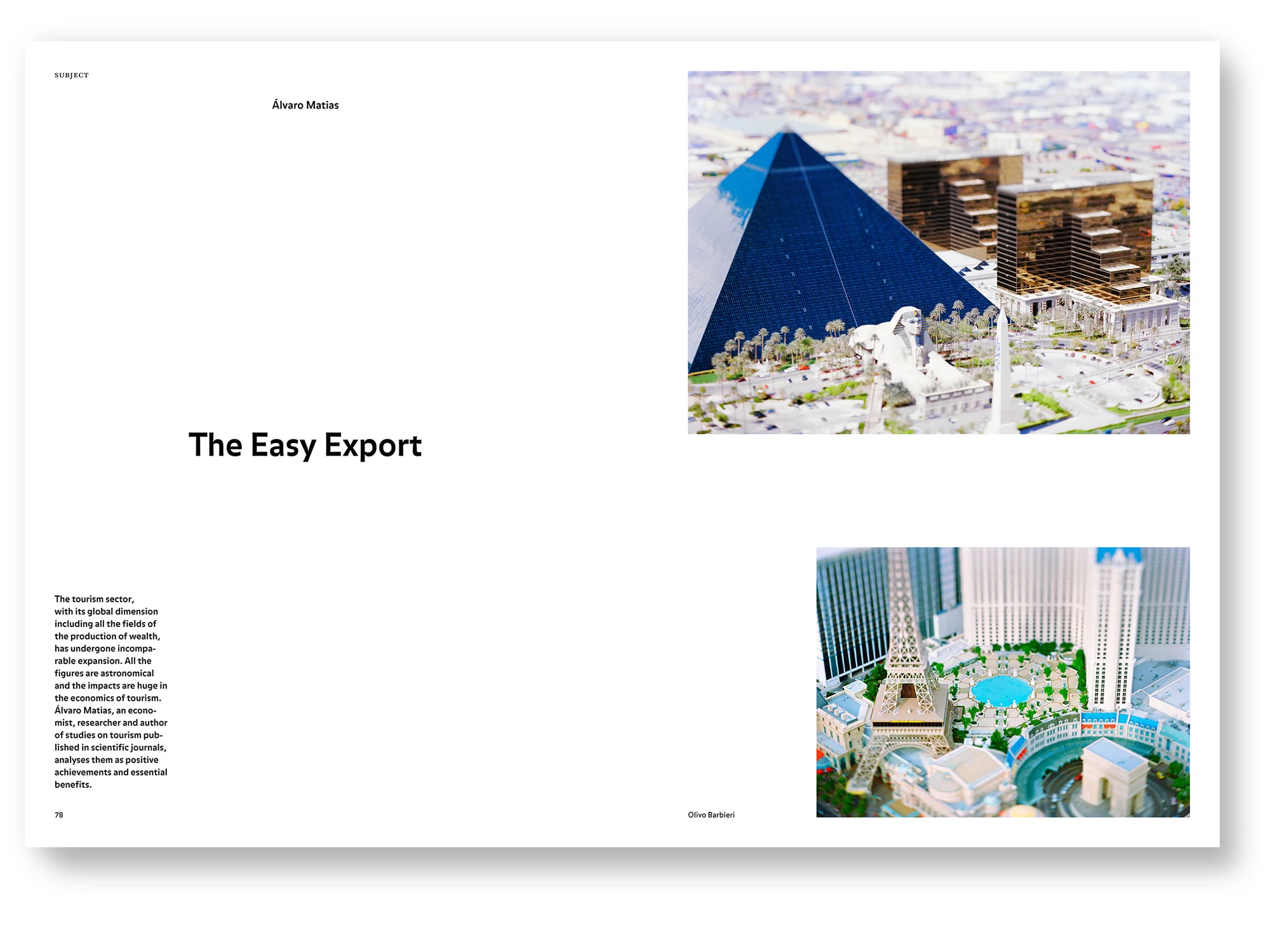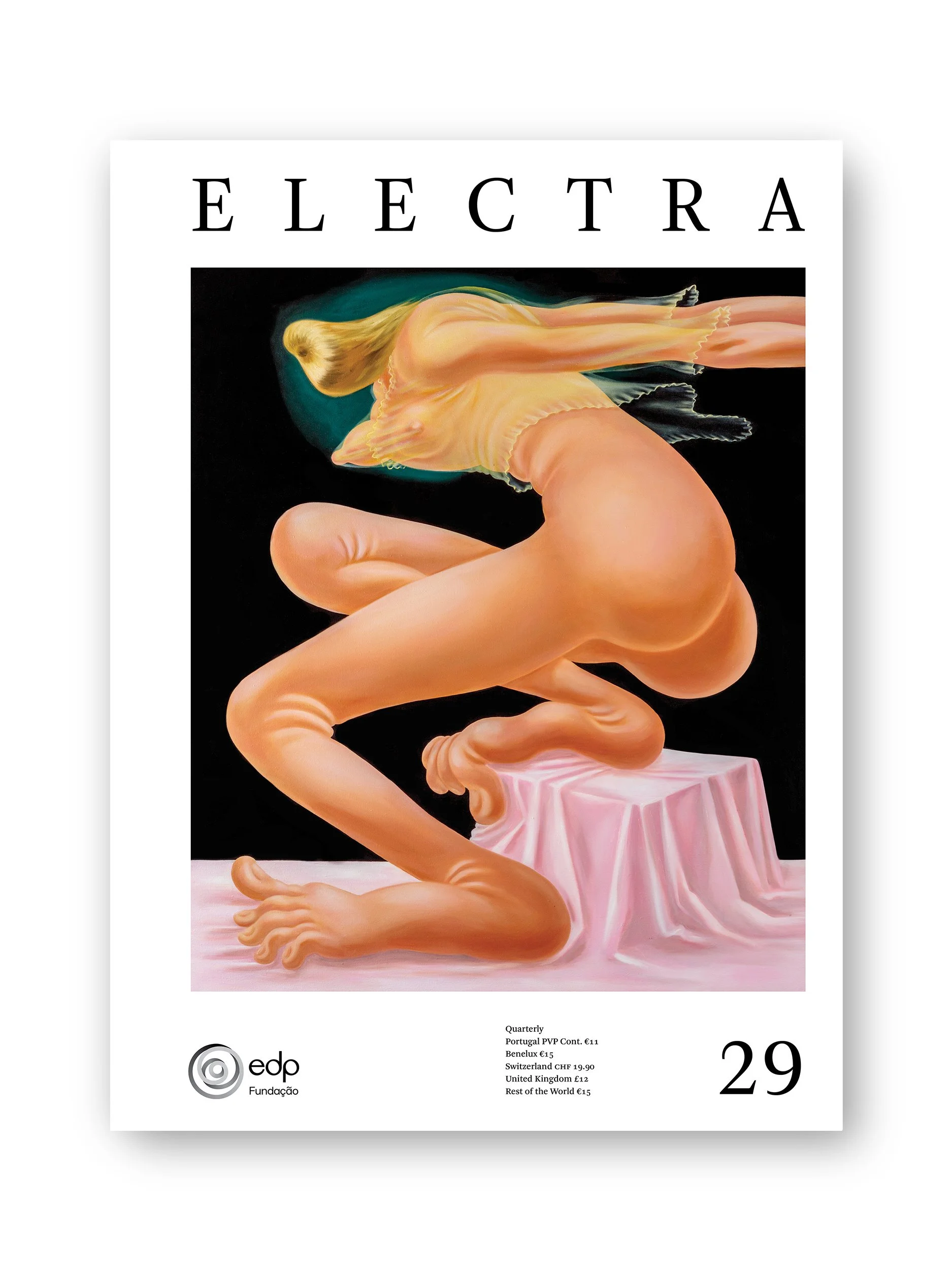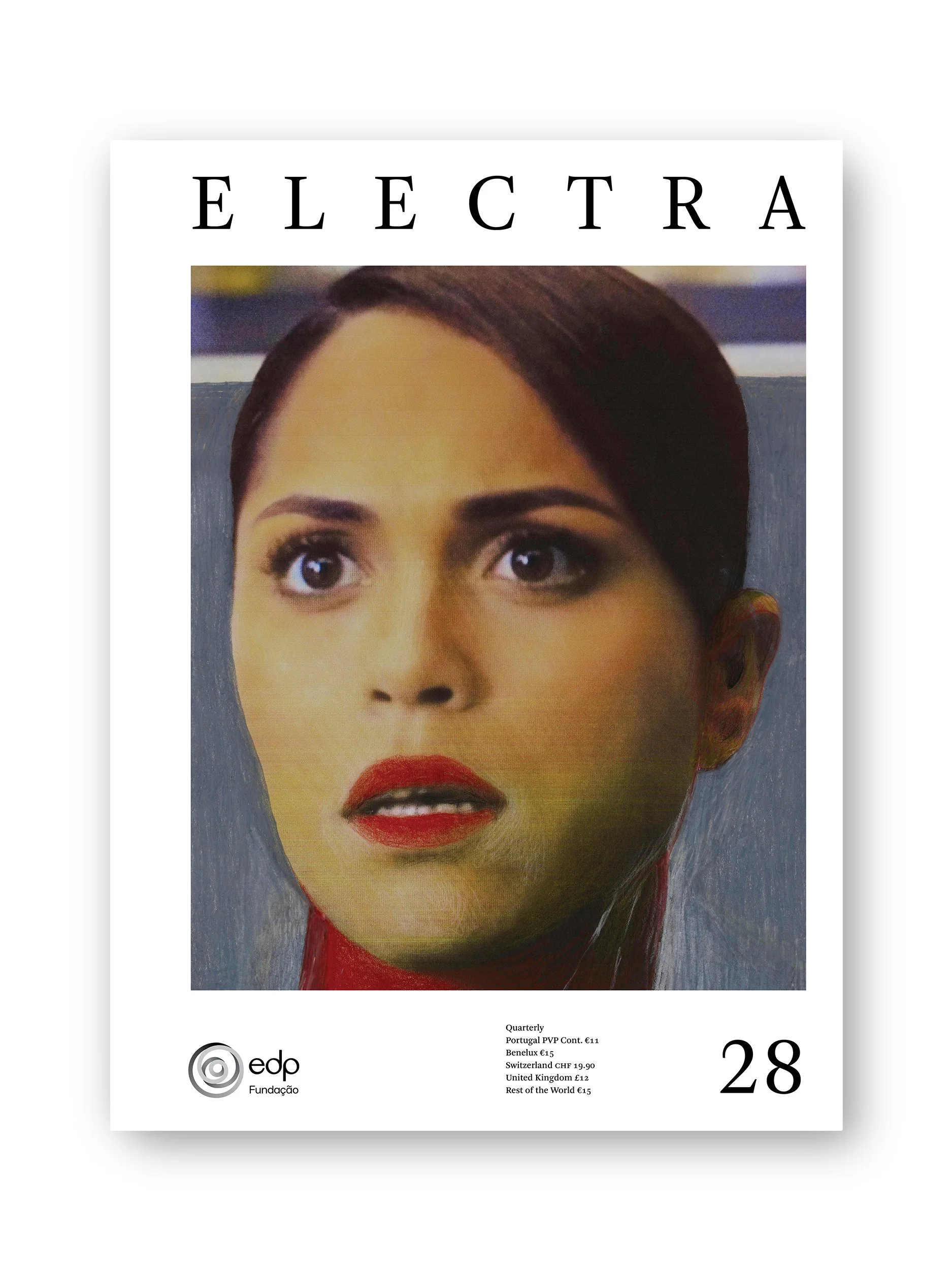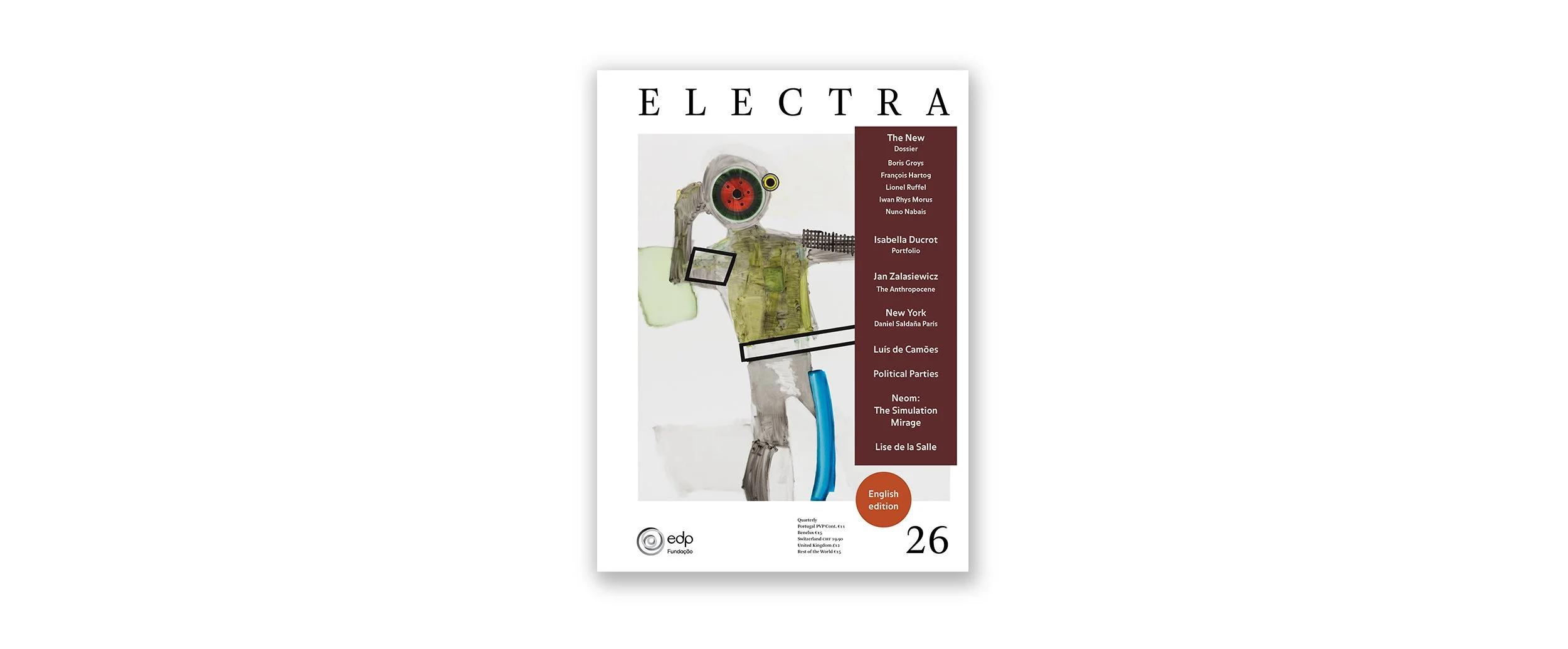....Electra 3 / Tourism..Electra 3 / Turismo....
















....Electra 3 / Tourism..Electra 3 / Turismo....
....
Tourism and its impacts on city life and on the landscape, culture and economy of host countries is the focus of the third issue of Electra. Geographer Álvaro Domingues traces the long history of the tourism phenomenon; French urban planner Thierry Paquot defends the disruption of the growing movement of world tourism; António Baião and António Pedro Marques analyse so-called 'ethical tourism'; economist and researcher Álvaro Matias reveals the numbers to examine the impacts of the tourism economy; French sociologist and ethnologist Jean-Didier Urbain discusses the figure of the tourist and the experience of the trip; and architect Pedro Bismarck reflects on the effects of tourism on the contemporary city.
This issue's interview features Rosi Braidotti, an Italian-Australian philosopher and author.
Italian philosophers Emanuele Coccia and Andrea Cavalletti comment on the definition of goods present in the work Capital, and historian José Neves examines the complex inheritance that Marx has left us. In the Diagonal section, biologist and researcher Vasco Barreto and professor of Portuguese and Brazilian studies Pedro Schacht Pereira analyse the question of race from the viewpoints of science and postcolonial studies.
Also in this issue, sculptor Rui Chafes writes about the work of fellow sculptor Manuel Rosa; António Guerreiro profiles Maria Velho da Costa; Catalan poet and essayist José Ángel Cilleruelo examines the history of the kiss within the public space of the city; and Bernardo Carvalho, a Brazilian novelist from Rio de Janeiro, makes an incursion into the 'epileptic city' of São Paulo. We also publish a facsimile of the diary of artist Pedro Cabrita Reis, creator of the cover art for this third issue of Electra.
.
Softcover, 27 x 20 cm, 192 pages
—
..
O Turismo e o seu impacto na vida das cidades, na transformação da paisagem, cultura e economia dos países é o assunto central do terceiro número da revista Electra. O geógrafo Álvaro Domingues traça a longa história do fenómeno turístico; Thierry Paquot, urbanista francês, defende a interrupção do movimento crescente do turismo mundial; António Baião e António Pedro Marques analisam o denominado “turismo ético”; o economista e investigador Álvaro Matias expõe os números e impactos da economia do turismo; Jean-Didier Urbain, sociólogo e etnólogo francês, aborda a figura do turista e a experiência da viagem; e o arquitecto Pedro Bismarck reflecte sobre os efeitos do turismo na cidade contemporânea.
A entrevistada desta edição é Rosi Braidotti, filósofa italo-australiana.
Os filósofos italianos Emanuele Coccia e Andrea Cavalletti comentam a sua definição de mercadoria presente na obra O Capital, e o historiador José Neves evoca a complexa herança que Marx nos deixou. Na secção Diagonal, Vasco Barreto, biólogo e investigador, e Pedro Schacht Pereira, professor de estudos portugueses e brasileiros, analisam a questão da raça a partir do debate científico e do ponto de vista dos estudos pós-coloniais.
Nesta edição o escultor Rui Chafes escreve sobre a obra de um outro escultor, Manuel Rosa; António Guerreiro traça o perfil de Maria Velho da Costa; o poeta e ensaísta catalão José Ángel Cilleruelo percorre a história do beijo no espaço público da cidade; e o romancista Bernardo Carvalho, brasileiro, carioca, faz uma incursão por São Paulo, “cidade epiléptica”. É ainda publicado em fac-simile um diário do artista Pedro Cabrita Reis, autor da capa deste terceiro número da Electra.
.
Capa mole, 27 x 20 cm, 192 páginas
—
....
“....But where is the tourist in all this? Must he or she be so ill-treated? Despised as a mass, ignored as an individual, unknown as a subject? Fisrt of all, tourist are not a mass! Enough is enough! It is their economic and industrial ill-treatment that results in this perception of them! But they are individuals of course, with desires, dreams and imaginings that reveal the coeherence of the imaginaries of their day. ..Mas, e o turista em tudo isto? Deve este então ser assim tão maltratado? Desprezado como massa, ignorado como pessoa, desconhecido como sujeito? Antes de mais, não é uma massa! Que acabemos com isso de uma vez! É o seu indevido tratamento económico e industrial que o pretende como tal! Mas claro que se trata de uma pessoa, com os seus desejos, os seus ideais e os seus imaginários, sonhos reveladores da coerência dos imaginários da época. .... ”
“....Globalisation brings a uniform quality not only to landscapes, but also to the sense of place and time. Architecture, and construction more generally, actively contribute to this homogeneity of form which makes elsewhere look like here. Airports, hotels, museums, restaurants, buses: none of these disorientate the tourist masses who, wherever they are, follow the same routines and timetables, eat the same bland food, wear the same kind of clothes – in short, conform to the image the must present of themselves. ..A globalização uniformiza não apenas as paisagens, mas igualmente as temporalidades e as territorialidades. A arquitectura, e de forma mais geral as construções, participam activamente desta homogeneização formal que faz com que o ali se assemelhe ao aqui. Os aeroportos, os hóteis, os museus, os restaurantes, os autocarros, não desorientam em nenhum grau o turista-massificado que pratica, onde quer que se encontre, as mesmas actividades nos mesmos horários, que engole os mesmos pratos insípidos, veste as mesmas roupas-tipo, em suma, se conforma à imagem que é suposto dar de si. .... ”
“....All of Manuel Rosa’s sculpture shows us that beauty is a consequence of duration and persistence (and, consequently, of contemplation). So his work stands outside this world of speed and haste, where superficial images and information flash past, making us confuse beauty with fleeting attraction, the inner pulse with a mere grasp. ..Toda a escultura de Manuel Rosa nos mostra que a beleza é uma consequência da duração, da persistência (e, por consequência, da contemplação). Por isso a sua obra não é deste mundo veloz e apressado, feito de sucessões meteóricas de imagens e infomações superficiais, que nos levam a confundir beleza com atracção fugaz, pulsação com estertor. .... ”
-
....
Director / José Manuel dos Santos
Editor / António Guerreiro
Chosen Works by Rui Chafes, Ana Cabral martins, João Oliveira Duarte, José Bártolo
Published by Fundação EDP
Summer 2018Softcover, 27 x 20 cm, 192 pages
ISBN 978 972 8909 635.. Director / José Manuel dos Santos
Editor / António Guerreiro
Obras escolhidas por Rui Chafes, Ana Cabral martins, João Oliveira Duarte, José Bártolo
Publicado por Fundação EDP
Verão 2018Capa mole, 27 x 20 cm, 192 páginas
ISBN 978 972 8909 628....












XIII Ibero-American Biennial of Architecture and Urbanism Award!